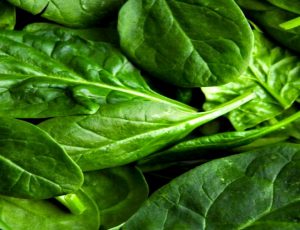Capsicum green – Desi Seeds
₹55.00
48 in stock
Capsicum green – Desi Seeds (Bell peppers) is a sort of blooming plants in the nightshade family Solanaceae. Its species are local to the Americas, where they have been developed for a huge number of years. Following the Columbian Exchange, it has turned out to be developed around the world, and it has likewise turned into a key component in numerous cooking styles. Notwithstanding use as flavors and sustenance vegetables, Capsicum species have additionally been utilized as pharmaceuticals and lachrymatory specialists.
Growing conditions
Perfect developing conditions for peppers incorporate a bright position with warm, loamy soil, in a perfect world 21 to 29 °C (70 to 84 °F), that is sodden yet not waterlogged. To a great degree, sodden soils can make seedlings “clammy off” and diminish germination.
The plants will endure (however not incline toward) temperatures down to 12 °C (54 °F) and are delicate to ice. For blooming, Capsicum is a non-photoperiod-touchy harvest. The blossoms can self-fertilize. Be that as it may, at to a great degree high temperature, 33 to 38 °C (91 to 100 °F), dust loses practicality, and blooms are substantially less prone to fertilize effectively.
Planting
- Begin seeds inside 8-10 weeks before the previous spring ice date.
- The temperature must be no less than 70° F for seed germination, so keep them in a warm territory generally advantageous and quickest outcomes.
- Begin pepper seeds three to a pot, and disperse the weakest seedling. Let the staying two pepper plants spend their whole lives together as one plant. The leaves of two plants help ensure peppers against sunscald and the yield is frequently twice comparable to two isolated plants.
- Start to solidify off plants around 10 days before transplanting.
- Seven days before transplanting, bring manure or matured fertilizer into your garden soil.
- After the threat of ice has passed, transplant seedlings outside, 18 to 24 inches separated (however keep combined plants near contacting.)
- Soil ought to be no less than 65° F, as peppers won’t survive to transplant at temps any colder. Northern nursery workers can warm up the dirt by covering it with dark plastic.
- Put a few matchsticks in the gap with each plant, alongside about a teaspoon of compost. These give the plants a touch of sulfur, which they like.
Care
- Soil ought to be all around depleted, however, make certain to keep up sufficient dampness either with mulch or plastic covering.
- Water one to two inches for each week, yet recall that peppers are to a great degree warm touchy. In the event that you live in a warm or desert atmosphere, watering regular might be fundamental.
- Treat after the main organic product set.
- Weed deliberately around plants.
- On the off chance that essential, bolster plants with confines or stakes to avoid bowing. Attempt financially accessible cone-formed wire tomato confines. They may not be perfect for tomatoes, but rather they are the ideal thing for peppers. Or then again, assemble your own garden bolsters.
- For bigger natural product, shower the plants with an answer of one tablespoon of Epsom salts in a gallon of water, once when it starts to blossom, and once ten days after the fact.
Harvest
- Reap when peppers achieve wanted size.
- The more drawn out chime peppers remain on the plant, the all the sweeter they move toward becoming and the more noteworthy their Vitamin C content.
- Utilize a sharp blade or scissors to cut peppers tidy up the plant for the minimum harm.
- Peppers can be refrigerated in plastic sacks for up to 10 days in the wake of collecting.
- Chime peppers can be dried, and we would suggest a regular stove for the errand. Wash, center, and seed the peppers. Cut into one-half-inch strips. Steam for around ten minutes, at that point, spread on a heating sheet. Dry in the broiler at 140° F (or the most reduced conceivable temperature) until fragile, blending sporadically and exchanging plate positions. At the point when the peppers are cool, placed them in sacks or capacity compartments.
Related products
-
₹200.00Coupon Code for FREE: freeseed18 Get 4...





